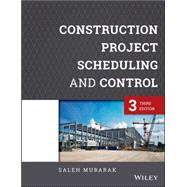Construction Project Scheduling and Control provides a comprehensive examination of the analytical methods used to devise a reasonable, efficient, and successful schedule for construction projects of all sizes. This updated third edition contains new information on building image modeling (BIM) and its relationship to project scheduling and control, as well as thorough coverage of the latest developments in the field. Written by a career construction professional, this informative text introduces students to new concepts in CPM scheduling, including the author's own Dynamic Minimum Lag technique. The expanded glossary and acronym list facilitate complete understanding, and the numerous solved and unsolved problems help students test their knowledge and apply critical thinking to issues in construction scheduling. A complete instructor's manual provides solutions to all problems in the book, test questions for each chapter, and additional exam questions for more comprehensive testing.
The entire success of a construction process hinges on an efficient, well-thought out schedule, which is strictly defined while allowing for inevitable delays and changes. This book helps students learn the processes, tools, and techniques used to make projects run smoothly, with expert guidance toward the realities of this complex function.
- Discover realistic scheduling solutions and cutting edge methods
- Learn the duties, responsibilities, and techniques of project control
- Get up to date on the latest in sustainability, BIM, and lean construction
- Explore the software tools that help coordinate scheduling
Scheduling encompasses everything from staff requirements and equipment needs to materials delivery and inspections, requiring a deep understanding of the process. For the student interested in construction management, Construction Project Scheduling and Control is an informative text on the field's current best practices.








